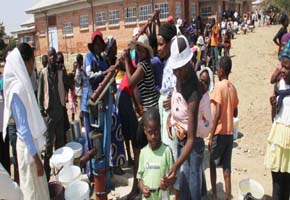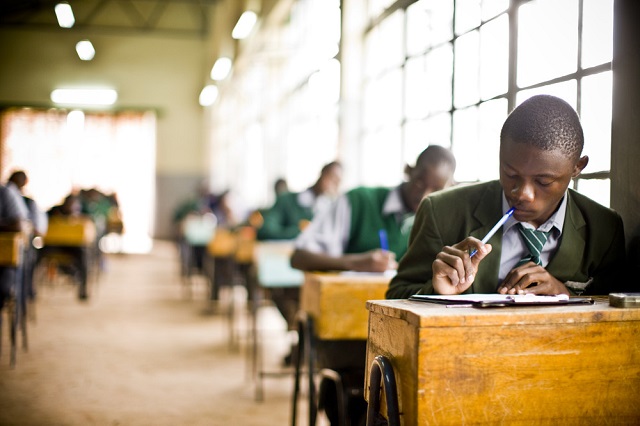Climate change: A threat to food security

Gender Opinion Vaidah Mashangwa
Gender, environment and climate change is one of the eight priority areas in the Zimbabwe National Gender Policy (2013-17), according to Sadc Gender Protocol 2013 Barometer Zimbabwe. This is an indication that climate change has serious repercussions on men, women, boys and girls though with varying degrees. Climate change is a major threat to food production in Africa especially in the rural areas where 86 percent of women are involved in agricultural activities.
Besides the inclusion of climate change in the National Gender Policy, the economic blueprint, Zim-Asset, also highlights the impact of long droughts and flooding on the agricultural sector. Other policy frameworks related to climate change in Zimbabwe include, The Environmental Management Act No 13 of 2002, National Water Act (1998), the National Water Authority Act No 11 of 1998 and the Civil Protection Act Chapter 10 of 1989.
Although Africa contributes less than three percent of total global greenhouse gas emissions according to Africa Capacity Indicators 2012, Africa is the most affected in terms of the negative impacts from climate change. Agriculture is the mainstay of Africa’s economy and development contributing between 35-40 percent of GDP and half of the total export earnings.
Climate change results in reduced land use, water shortages, and affects crop varieties and livestock resulting in a decline in household income levels, malnutrition, stress, school dropouts, migration, high mortality rates and increases the burden of work on women and girls.
According to the Intergovernmental Panel on Climate Change (IPCC) between 75 and 250 million people will be affected by water shortages by 2020 and yields from rain-fed agriculture will be reduced by up to 50 percent. The IPCC predicts that temperatures are expected to rise by between 1.5 to 4 degrees Celsius and prolonged droughts and floods with agricultural losses of between two and seven percent of GDP by 2100 in some parts of Africa. It is also estimated that fisheries will be affected due to rises in sea temperatures reaching between 50 to 60 percent by 2100.
So far there have been major extreme weather events in Africa such as the 1986-7 and 1991-2 drought, the drought of 2010-11 and Cyclone Eline in 2000. Zimbabwe recently experienced floods in Tsholotsho and Masvingo.
When families are displaced in the aftermath of such disasters, more women and girls are heavily affected as levels of sexual harassment and abuse increase because of families living together in open spaces. There is generally lack of privacy for dressing and bathing especially for women and girls. According to the Sadc 2013 Barometer, a study of disasters in 141 countries showed that women and children are 14 times more likely to die than men.
Water plays a central role in the development of economies world-wide, yet this sector is the most vulnerable in terms of climate change. By 2025, 25 countries are expected to have water scarcity (African Partnerships Forum 2008). Some of the countries expected to face water challenges are Zimbabwe, Algeria, Angola, Burkina Faso, Chad, Mozambique, South Africa, Tanzania, Uganda, Kenya and Ethiopia.
Water scarcity also affects girls and women’s hygiene and sanitation especially as it relates to menstruation and child birth. During such times there is need for women to bathe and change sanitary wear regularly. One of the major obstacles to girls’ education in developing countries is the lack of sanitation facilities that allow adolescent girls to deal with menstruation.
Ill-health caused by inadequate water and sanitation increases the need to care for the sick family members and this responsibility falls on women and girls. Women are also susceptible to a greater health risk from certain water and sanitation related diseases because of their caring role.
When water is scarce, women and girls are the primary water carriers for their families doing the fetching in over 70 percent of households in Sub-Saharan Africa. Only 55 percent of households are within 15 minutes of a water source according to a UN Women Progress of the World’s Women 2015-2016. At times women walk for two hours to collect water while during water cuts in urban areas, women wait in the queue for over an hour. Normally this translates to lost income for women and lost schooling for girls.
Fetching and carrying water also causes wear and tear to women’s bodies and a high level of mental stress when water rates are insecure. It is the women and girls who ensure that food is prepared and family members bath. Twenty-three percent of men and six percent of boys fetch water compared to 62 percent women and nine percent girls.
In terms of crops, yields are projected to decrease in Africa due to climate change especially sugar cane, sweet potatoes, cassava, maize and rice production. The International Plant Protection Convention projects that without appropriate adaption, Africa could witness up to 40 percent decline in cereal production by 2050.
One way for adaption since Africa’s crop farming is rain-fed is in improving weather forecasts and early warning systems. African countries need therefore to mobilise resources to provide climate information and forecasting as well as strengthen research and development. Very few African countries have the technological knowhow to predict weather accurately due to limited investment in such areas. There is also need to integrate local and indigenous knowledge systems with scientific knowledge systems.
One other solution is to construct more dams for irrigation though the problem for Zimbabwe and South Africa is the uneven distribution of suitable dam sites. One other area that is usually ignored is pests and disease control measures.
When yields dwindle, this has a negative effect on the income levels of both men and women. However, lactating mothers, the sick, elderly, widows and widowers and child-headed homes are affected more. The issues of malnutrition and ill-health affect women more as they care for the sick.
Male migration too increases in times of food insecurity and poverty and thereby increases the burden of work and family care on women. Increased household chores may also lead to more girls dropping out of school. Girls also care for their siblings in child-headed homes and at times they look after their sick parents and relatives while boys proceed with their schooling.
The Zimbabwe 2012 MDG Progress Report states that low levels of environmental awareness remain one of the main challenges to ensuring sustainability and recommends public awareness on environmental issues including climate change.
Vaidah Mashangwa is Bulawayo’s Provincial Development Officer for the Ministry of Women Affairs, Gender and Community Development. She can be contacted on 0772111592 email [email protected]







Comments